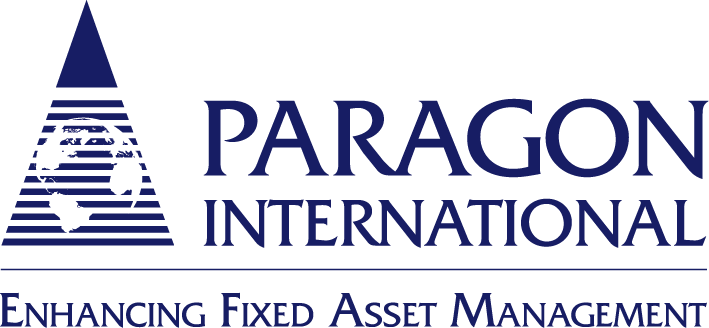Are you spending an excessive amount of time entering data into spreadsheets when you could be doing more important work instead? Do you have trouble updating roll-forward activity and keeping track of all your fixed assets? Is your company worried about spreadsheet security? If you’ve answered yes to any of these questions, it may be time to eliminate the problems with fixed asset spreadsheets.
Many businesses use spreadsheets to manage their fixed assets, even though it could hurt their business productivity and ROI. According to Forrester Research, over 50% of organizations use spreadsheets to keep track of business intelligence.
Spreadsheets are designed and programmed on the fly, making it difficult to effectively keep track of fixed assets. It often leads to human errors and is difficult to customize reports to meet an organization’s unique needs.
How do you know when it’s time to solve your problems with fixed asset spreadsheets? Read on.
Too busy managing your spreadsheets to read now? Download the expanded Whitepaper on this topic.
Sign #1 – Trouble Tracking Assets with Spreadsheets
A problem with using fixed asset spreadsheets to keep track of your organization’s fixed assets is that they are often not integrated with other departments. This makes it difficult to continually provide an accurate look into ongoing changes in your asset inventory. As your organization grows, your inventory will grow with it, which means the spreadsheet implementation process will take much longer.
At the end of the month, employees are rushing to put new assets and updates into the system, and may overlook ghost assets (unrecorded retirements for disposed assets) that needed to be written off. When Paragon completes a fixed assets inventory and reconciles to existing ledgers, we typically find 15 – 30% ghost assets. Are you not removing fixed assets that no longer exist? Put another way, are you overpaying on insurance, income taxes and property taxes, based on an overstated ledger?
A free-form spreadsheet typically lacks an audit trail, with limited or no easy way to stay informed about what’s been added or updated to the file. Additionally, rules or templates cannot be used to ensure similar types of assets receive consistent treatment across GAAP and tax depreciation books, such as the appropriate depreciation life or method.
Sign #2 – Can’t Communicate Fixed Asset Status Updates
Spreadsheets often come with limited user access, making it hard for organizations to communicate across all lines of business when new assets are added to the system.
Notifications that someone else is editing the document are frustrating and force you to wait until they are done. Unless every update is communicated, users won’t know which assets were added or removed. Additionally, if there is no audit trail, it’s difficult to give the organization visibility into what assets truly exist and identify who’s responsible for making changes to the records.
Spreadsheets discourage collaboration and eliminate real-time discussion. In large organizations, where multiple employees manage fixed assets, there are often multiple versions of the same spreadsheet. This leads to inconsistent and inaccurate data, not to mention data security risks. We cover that in Sign #4.
Sign #3 – Errors in Spreadsheets are Overlooked or Problematic
Think your spreadsheets are error-free? Think again. Nearly 90% of spreadsheets contain formula errors.* Problems with fixed asset spreadsheets typically include formulas that are created and changed by different people over time. This leads to a high probability of human error. (*Source: MarketWatch)
Data errors go unnoticed until they cause a problem. From a financial control stand-point, there’s no indication that the numbers have errors until your balance sheet no longer balances. And if your numbers don’t balance, the file isn’t picking up all new and retired fixed assets.
For calculating depreciation, a spreadsheet won’t give you the logic you need to decide the true life span of the asset. This is a very common mistake made with straight line mid-month depreciation. If the asset is placed into service after the 15th of the month, depreciation should start during the following month. Many organizations’ spreadsheets attempt to allocate depreciation for one-half of a month within the first month of service, or try to calculate a daily rate. Accurately calculating declining balance methods, such as MACRS, is a process that’s slow, complicated, and error prone.
Many companies don’t take advantage of these tax deductions such as Bonus Depreciation or Section 168k allowances. They find it too challenging or time consuming to handle the updates and depreciation calculation formulas – resulting in unrealized tax savings.
Sign #4 – Your Financial Data is at Risk
Security experts have long warned against using spreadsheets to keep track of vital business data. Spreadsheets lack security safeguards, making it impossible to keep an audit trail of activity and changes.
For the five year period from 2010 to 2014, there were over 2,900 data breaches that exposed over 234 Million records. For the five year period from 2015 to 2019, there were over 6,200 data breaches that exposed nearly 1.04 BILLION records.* That’s double the number of breaches, and FOUR TIMES the number of records exposed. Scary and sobering statistics indeed. (*Source: Statista)
Have you encountered a situation where a confidential spreadsheet was accidently placed in the wrong hands? Perhaps it was sent to a mass distribution email list or someone outside the organization? It’s no secret that email has security flaws. Emailing spreadsheets back and forth is putting your business and data at risk.
Furthermore, multiple users can make changes to the document, which can lead to version control issues down the road. Data breaches and their problems with fixed asset spreadsheets can turn small situations into disasters.
Sign #5 – Managing and Keeping Track of Your Fixed Assets Feels Like a Full-Time Job
Entering fixed asset data into a spreadsheet is labor intensive and takes a lot of time. Does the manual entry process have you stressed out and feeling like you’re doing multiple people’s jobs? Being able to digitally enter asset inventory updates with a barcode scanner, or upload capital purchases from the accounts payable system, would prevent a big headache and save a lot of time.
As the saying goes, “Many hands make light work!” Using a system that allows secure access for multiple employees makes it easy to share the responsibility, and allows employees in other departments that manage and deploy assets to keep records up to date.
Another saying is “Save time, save money.” A dedicated fixed assets solution can help you save time by automating your processes instead of manually entering data into a spreadsheet. You can eliminate the month-end rush to compile your monthly reports, and can repeatedly, accurately and quickly generate reports in only a few minutes.
Features of a Good Fixed Assets Solution
A sound fixed assets management system can lead to substantial tax savings in depreciation deductions, whereas, a poor fixed assets system can threaten the accuracy of financial reports and create audit issues. Establishing the highest standards of depreciation accuracy and best practices in fixed assets management will pay off in savings. See how much you can save with our handy ROI Calculator.
When evaluating Fixed Assets Solutions, here are some key features to consider:
- Easy-to-use interface and navigation that is visually appealing and includes comprehensive search, query, help and documentation
- Open and extensible system that allows for easy reconciliation, import/export and integration with general ledger and other accounting systems
- Extensive standard data fields and reports – including IRS forms, as well as customizable fields and reports, designed to meet specific company management needs
- Robust security to safeguard the accuracy and integrity of fixed asset inventories and depreciation data
- Scalable solutions for growing and various company sizes, which integrate with inventory barcode reader equipment and asset tags
- Rich history and experience with fixed assets solutions, regular software updates as tax laws change, and responsive technical support
Choose a Worry-Free Fixed Assets Solution
Simplify your fixed assets accounting process with a software solution that’s designed specifically for managing fixed assets. Sage Fixed Assets is the complete fixed assets accounting solution that helps organizations of all sizes and industries manage one of the largest lines on their balance sheet – their fixed assets.
Do these 5 Signs resonate with you and your organization? Want to dig deeper into this topic and share it in a printable PDF form? Download our Whitepaper.
Simplify your life. Ditch your problems with fixed asset spreadsheets. Contact Paragon today to learn how Sage Fixed Assets can help you manage your fixed assets with ease.




